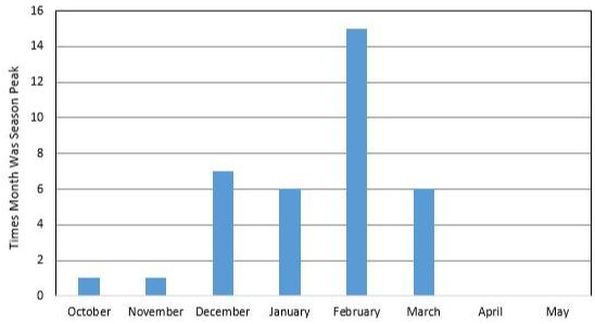HOW MANY OF YOU WERE AWARE OF THE FLU SHOT’S RAPID HALF-LIFE?

When we talk about the effectiveness or efficacy of flu vaccines, the government and big pharm admit that in a good year (a “matched year,” where the influenza viruses chosen for the vaccine actually correlate with the most common circulating strains), efficacy is under 60%. The problem is, according to current data this happens less than once a decade. Furthermore, when we say that the flu vaccine is 10% effective (as seen last year — HERE — and predicted again for this year — HERE), this does not mean the shot gives you 10% protection. It means that 200 people must be vaccinated to prevent a single case of influenza (HERE).
Lately I’ve been showing you why this sort of poor performance is the norm. Among other reasons there’s the constant problem of GENETIC DRIFT. There’s the issue of FLU -VS- FLU-LIKE VIRUSES. There is also the situation where consecutive-year shots have been shown to cause increasingly poor immune system responses (HERE). And now we are hit over the head with still another; the fact that the flu vaccine has a much shorter than touted half-life.
I showed you previously that it will not be long before experts recommend everyone get two flu shots per year instead of the currently recommended one. Why? Because previous studies have shown that flu vaccines have a half-life of between one and two months. What do I mean? Get your flu shot today, and within weeks it has lost a significant amount of it’s already poor ability to protect against the flu virus (HERE). A brand new article from one of the journals in the American Medical Association’s stable (JAMA Network) asked a question via its title, Is It Possible to Get a Flu Shot Too Early? According to these authors, it seems so.
The paper started out by saying that the annual push to get the population vaccinated against influenza starts when pharmacy or grocery store patrons are increasingly early; “more likely to be shopping for sunscreen and potato salad than cough drops and Halloween candy.” Why is this happening and why might it be problematic? A Harvard epidemiologist provided an answer to the first half of this question by stating, “Drugstores and supermarkets are motivated to immunize people sooner rather than later because if they don’t, customers might go somewhere else or do without. The incentives in the private sector are not necessarily aligned with public health.” Did you catch that folks? This is a kinder, gentler way of saying it’s all about the money.
As to the second part of the question, early flu shots are problematic because if people — especially the elderly who are always targeted the hardest — are getting their flu shots in July or August (as mentioned in this paper), then by the time flu season actually starts, they’ll have burned up what small amount of vaccine efficacy may have existed (emphasis on the word may). What does the CDC and their buddies down on the pharm have to say about this?
“In the United States, flu season occurs in the fall and winter. While influenza viruses circulate year-round, most of the time flu activity peaks between December and February, but activity can last as late as May. While some studies suggest that influenza vaccine’s effectiveness might wane before the end of flu season, public health researchers worry that shortening the recommended period for influenza vaccine could cause logistical problems, leading some people to skip getting immunized altogether.”
This, of course, begs the question of just how much influenza vaccine efficacy wanes over the course of a flu season. To answer that we need to know what actually constitutes an ‘official’ flu season. Rather than go through all the convoluted gobblety gook found in older CDC articles, I’ll give you their answer to this question from something current, Frequently Asked Flu Questions 2018-2019 Influenza Season. “It is not possible to predict what this flu season will be like. While flu spreads every year, the timing, severity, and length of the season varies from one season to another.” In other words, who knows until it’s over?
However, if you look at this handy-dandy CDC bar graph (Peak Month of Flu Activity 1982-1983 through 2017-2018), you’ll quickly notice that for the past 35 years, on average, flu season has peaked in February —- more than double that of any other month.

Now let’s put it all together and see why this might be important to understand for those who clamor for their annual flu shot. Citing studies showing that vaccine efficacy declines by anywhere from 7 to 16% per month, the author’s implication was that if you get vaccinated in mid-September, by the time flu season starts kicking into gear, you’ve lost half of your “juice”. And by the time flu season’s Big Bad Wolf (February) rolls around, vaccine efficacy has waned by (gulp) almost 3/4. Listen to what was said by Dr. Nicola Klein (MD / PhD), one of these study’s co-authors, under the header, Explaining the Waning……
“I think it has to do with the actual components of the vaccine. I think it’s been pretty well established that the vaccine is not optimal…. We at Kaiser haven’t changed any of our clinical practice related to flu immunization. It’s better to get vaccinated early than not at all.”
How many articles have you seen attempting to explain away the various factors that make the flu vaccine so cruddy, then following it up with the “get vaccinated anyway” line? In this case we saw various interviewed experts attempting to explain these findings away (not any too convincingly I might add), first by saying we need more studies, and then saying that the types of studies needed would be difficult or even impossible to do. For the record, this paper revealed that the group hit hardest by vaccine-waning was, as expected, THE ELDERLY — a population for which the vaccine does not work well in the first place.
When you look at MY NUMEROUS POSTS ON FLU VACCINES AND THE ANTI-VIRAL MEDS USED TO TREAT THEM, you’ll see that the field is a confused and muddled mess confounded by so many variables that NUMEROUS MD’S are being forced to admit that this program has been an abject failure. Unless, of course, you happen to be a company that manufactures the stuff. If you really want to stay healthy this flu season, start by not even thinking about “BOOSTING” YOUR IMMUNE SYSTEM. Instead, figure out what you could do to diminish your level of systemic inflammation (HERE are a few pointers). And if you like what you are seeing, be sure to like, share or follow on FACEBOOK as it’s a fantastic way to reach the people you love and care about most!
